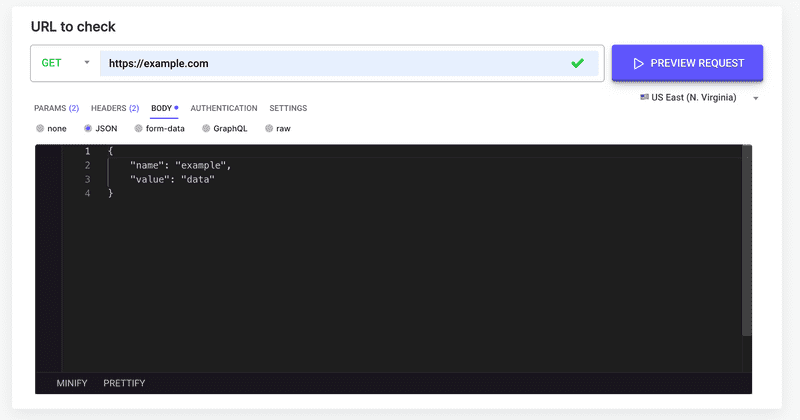Request Configuration
API Check Request Configuration
What is Request Configuration?
The Request Configuration is where you define the details of the API endpoint you want to test. This includes setting the URL, HTTP method, and any additional parameters or headers required for the request.
Configuring the Request
- URL Endpoint: Set the URL of the API endpoint you want to test. This is the address that the check will send requests to.
- HTTP Methods: Choose from the following allowed HTTP methods based on what your API endpoint supports:
- GET: Retrieve data from the server.
- POST: Send data to the server to create/update a resource.
- PUT: Update an existing resource on the server.
- PATCH: Partially update an existing resource on the server.
- DELETE: Remove a resource from the server.
Additional Request Configurations
You can further customize your API Check with the following options:
Query Parameters: Add key/value pairs to append to your URL. This allows you to pass additional data through the URL.
Headers: Add custom headers to your request. Headers can be used to send metadata and control how the request is processed.
POST Body: Include a body for POST requests. This is useful for sending data to create or update resources.
Basic Authentication: Provide credentials for basic authentication. This is used to authenticate the request with the server.
Skip SSL: Option to skip SSL verification. This can be useful for testing endpoints with self-signed certificates.
Follow Redirects: Option to follow HTTP redirects. This ensures that the check follows any redirection responses from the server.
- Example:
Follow Redirects: true
- Example:
Practical Use Cases
- Testing GET Requests: Verify that your API correctly retrieves data.
- Testing POST Requests: Ensure that your API can handle data creation or updates.
- Using Headers for Authentication: Pass authentication tokens in headers to access protected resources.
- Sending Complex Query Parameters: Test how your API handles complex queries.
By configuring these settings, you can tailor your API checks to match the exact requirements of your API endpoint, ensuring comprehensive testing and monitoring.





